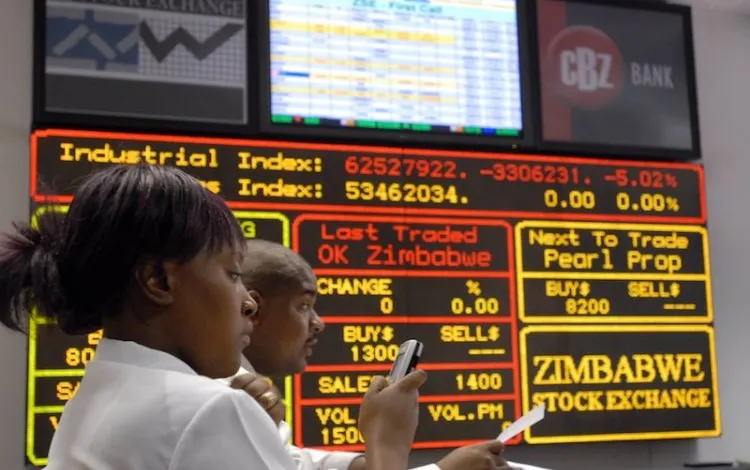
International investing offers Zimbabwean investors exciting opportunities, especially in large markets like the United States.
Among various ways to invest, options trading has grown popular because it offers different strategies to manage risk and seek profit beyond simply buying stocks.
This article explains the basics of options trading in simple terms, using the US stock of Palantir Technologies (stock symbol: PLTR), priced at about US$155, as an example.
Disclaimer: This article is for educational purposes only and is not investment advice. Options trading carries substantial risk and is not suitable for all investors.
Always do your own research and consult a licensed professional before trading.
This will be my last article from Zimbabwe. If all goes well, I will be back in Canada soon and plan to share insights from my trip as well as my usual updates on the US, Canadian, and global markets. Until next time, trade and invest wisely.
What are options?
Options are financial contracts that give you the right (but not the obligation) to buy or sell a stock at a specific price (called the strike price) before a certain date (called the expiration date).
- Chamisa under fire over US$120K donation
- Mavhunga puts DeMbare into Chibuku quarterfinals
- Pension funds bet on Cabora Bassa oilfields
- Councils defy govt fire tender directive
Keep Reading
There are two types of options:
Call options: The right to buy the stock at a set price before expiration.
Put options: The right to sell the stock at a set price before expiration.
Rather than buying stock outright, options allow you to control shares for less money, but they are more complex and riskier than regular stocks.
Why Zimbabwean investors might like options
Options give more flexibility. For Zimbabwean investors interested in US stocks like PLTR, options can:
Limit risk: For example, buying a put option lets you protect your stock if the price falls.
Generate income: Selling options can bring premiums (money paid upfront) from other investors.
Leverage: You can control more shares with less money, potentially increasing gains.
An example using PLTR
Let’s say PLTR’s stock price is currently US$155. An option contract usually controls 100 shares. So one call option with a US$160 strike price (meaning you can buy PLTR at US$160) gives you the right to buy 100 shares at US$160 each before the expiration date.
If PLTR’s stock rises to US$180, you can exercise your call option and buy shares at US$160, or sell the call option for a profit. But if the stock doesn’t rise above US$160, the option expires worthless, and you lose the money spent to buy the option (called the premium).
Common strategies I use and recommend for beginners
- Leaps (long-term equity anticipation securities)
These are options that expire in one to three years, much longer than regular options that expire in weeks or months.
I use Leaps mostly on fundamentally strong stocks that have recently dropped significantly—like PLTR falling from a higher price to around US$155—and I believe they will rise again over time.
Buying a Leaps call option lets me participate in future gains with less upfront cost than buying shares.
For example, if I buy a Leaps call for PLTR expiring two years from now at a US$160 strike price, I have the right to buy 100 shares for US$160 anytime until expiration. If PLTR stock rises above US$160, my option could become very valuable.
- Being an options seller (writing options)
Buying options can be tricky because options lose value over time through something called time decay. This means the closer an option gets to expiration, the less it is worth, all else equal.
To reduce losses from time decay, I mostly sell options to collect premiums, which gives me income even if stock prices stay flat.
Two popular selling strategies I use are:
Cash-secured puts (CSPs): I sell put options on stocks I wouldn’t mind owning at a lower price. For example, I might sell a put on PLTR at a US$140 strike price. If PLTR falls below $140, I likely get assigned (meaning I must buy 100 shares at $140), but I keep the premium received from selling the put. If it stays above $140, I keep the premium without buying shares.
Covered calls (CCLs): If I own PLTR stock, I sometimes sell call options with a strike price higher than the current price (like US$170). If PLTR doesn’t rise above US$170 before expiration, I keep the premium and my shares. If it rises beyond US$170, I likely sell my shares at a profit plus the premium.
- Using cash for safety
I always use cash I can afford to risk when engaging in options trading. Options amplify gains but also can lead to significant losses, especially if the market moves against you.
- Research and learning are key
You can never fully understand options without study and practice. I recommend reading, watching videos, and even following my YouTube channel, Streetwise Economics here, where I share step-by-step guides and insights.
It’s also wise to consult professional advisors who have a proven track record. Don’t be afraid to ask for their past results before trusting someone with your money.
Risks of options that Zimbabwean investors should know
Leverage risks: Options magnify gains but also losses. For example, buying options can result in losing your entire premium if the stock doesn’t move as expected.
Time decay: Options lose value as they approach expiration.
Complexity: Without experience, options trading can be confusing and risky.
Market and liquidity risks: Some options or stocks can be hard to buy or sell in certain market conditions.
Foreign exchange risks: Broadly, investing in US markets exposes Zimbabwean investors to currency risk due to fluctuations between the Zimbabwe Gold, US dollar, and Canadian dollar.
How I use options in my broader long-term strategy
Options are tools I use primarily for two purposes:
Managing risk: Using covered calls or cash-secured puts helps me generate income and set price levels at which I want to buy or sell shares.
Seizing opportunity: Buying Leaps options allows me to push my gains if I strongly believe in a stock’s future potential after a price drop, without committing large amounts of capital upfront.
This balanced approach helps me protect capital, avoid rushing into decisions, and stay prepared for market ups and downs.
Final thoughts for Zimbabwean investors
For Zimbabwean investors interested in the US market, options trading offers valuable flexibility, but it requires caution, study, and experience. Start small, learn continuously, and never trade money you cannot afford to lose.
I hope this article has made options trading more understandable for you and inspired you to explore this exciting strategy carefully.
Again, don’t forget to subscribe to my YouTube channel Streetwise Economics for detailed tutorials and real-market examples. If you want personal guidance, book a one-on-one coaching session at www.streetwiseeconomics.com.
Thank you for reading! This will be my last article from Zimbabwe for now. Soon, I will return to Canada and share new insights from my trip and the evolving markets.
Until next time, trade and invest wisely!











